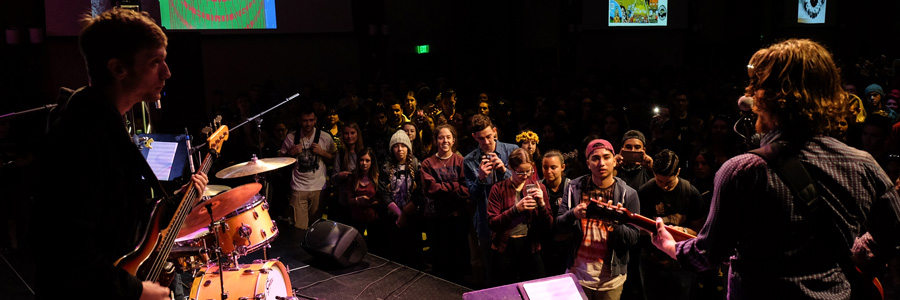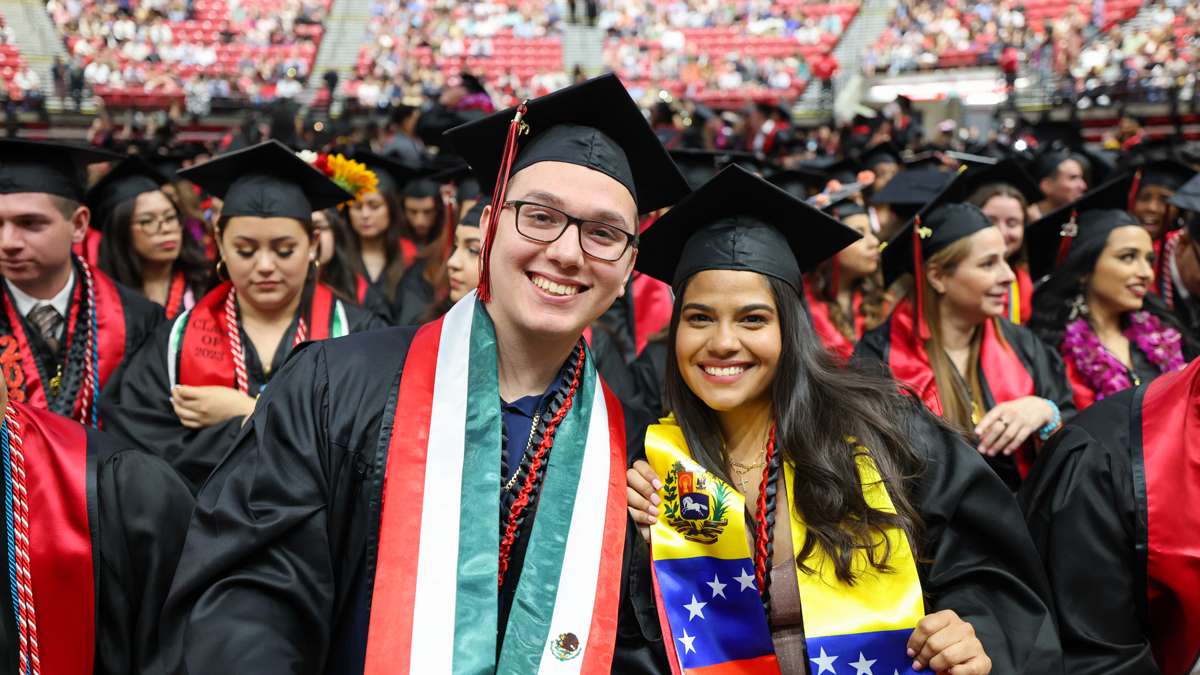Arts Alive SDSU Revolutionizes Interdisciplinary Teaching Methods

Collaborative teaching infuses the arts across many disciplines
Arts Alive SDSU has revolutionized the concept of cross-curricular teaching through its Interdisciplinary Collaborative Teaching Initiative. Collaborative teaching allows two professors, to work together to create an educational experience that compliments the curricula and learning outcomes for both classes. The partnerships are required to involve one arts and one non-art discipline, and the courses together must conclude with a culminating event that is shared with the wider SDSU community. The courses meet at the same day and time but in different locations; as few as four times each semester the course meet together and the professors jointly lecture or team-teach. All students collaborate and work across disciplines, and professors have a wide degree of flexibility in developing their joint courses. For instance, together professors determine how often the courses meet collaboratively, what student will work on together and separately, and how they will structure an end of semester event.
Psychedelic Mirrors
In fall 2016, the first of these courses launched with English Professor William Nericcio, Ph.D. and music Professor Eric Smigel, Ph.D. They combined their respective courses, English 220: Introduction to Literature and Music 351: Music and Culture of Psychedelic Rock 1960s, for a total of 500 students. With overarching themes such as the distortion of time and space and other concepts connected to “psychedelic culture, the classes met four times over the semester to discuss the countercultural movement and common themes. Their final exhibition, “Psychedelic Mirrors: Acid Test” featured a multimedia collage of lights, film projections, face painting, and a live performance by a psychedelic rock band. Students in this first cohort were surveyed on their collaborative teaching experience, and nearly 60 percent of the students found the interdisciplinary format enhanced their learning experience; while only two percent reported little value in the interdisciplinary work. Comments from the narrative portion of the survey included, “Love that we had the opportunity to learn from both professors and hear two perspectives,” “I think this can expand a student’s immersion into the subject,” and “Interesting, fun and stimulating format.”
Breaking New Ground
Arts Alive SDSU funding covers many of the costs associated with the program, from securing venues for culminating events, to paying for a replacement lecturer so that the professor can develop curriculum for collaborate classes. It is for that reason the courses are only developed every other year, and must be taught at least twice. “While some faculty at other universities have attempted to create similar programs, they that have done so by working around the edges,” said Dani Bedau chair of Arts Alive SDSU. “The institutional (financial) support provided at SDSU is unprecedented.” SDSU’s collaborative teaching program has the potential to have a profound impact on institutions nationwide. Bedau, who is involved in many national organizations including the Alliance for Arts in Research Universities (a2ru), co-presented on the program at a recent symposium at the University of Colorado, Denver. Further, Bedau has published articles and the work has been presented at other national conferences. Additionally, the Arts Alive SDSU Visual Discourse Analysis process, which qualitatively analyses the success of the classes through pictures and other visual methods, has brought buzz to the program.
Next Steps
Currently, there are six approved collaboratively designed classes that will be offered at SDSU over the next few years. The classes range from the second iteration of the collaboration between countercultural literature (ENGL 220) and psychedelic rock (MUSIC 351) to designing scientific data presentations (Biology 600B) and communicating science (ART 441). In the coming year, students will see collaborations between dance and physics as well as between public affairs and television writing, to name a few. Arts Alive SDSU will continue to assess the value and learning outcomes of these courses and make adjustments as necessary.
The content within this article has been edited by Lizbeth Persons.

